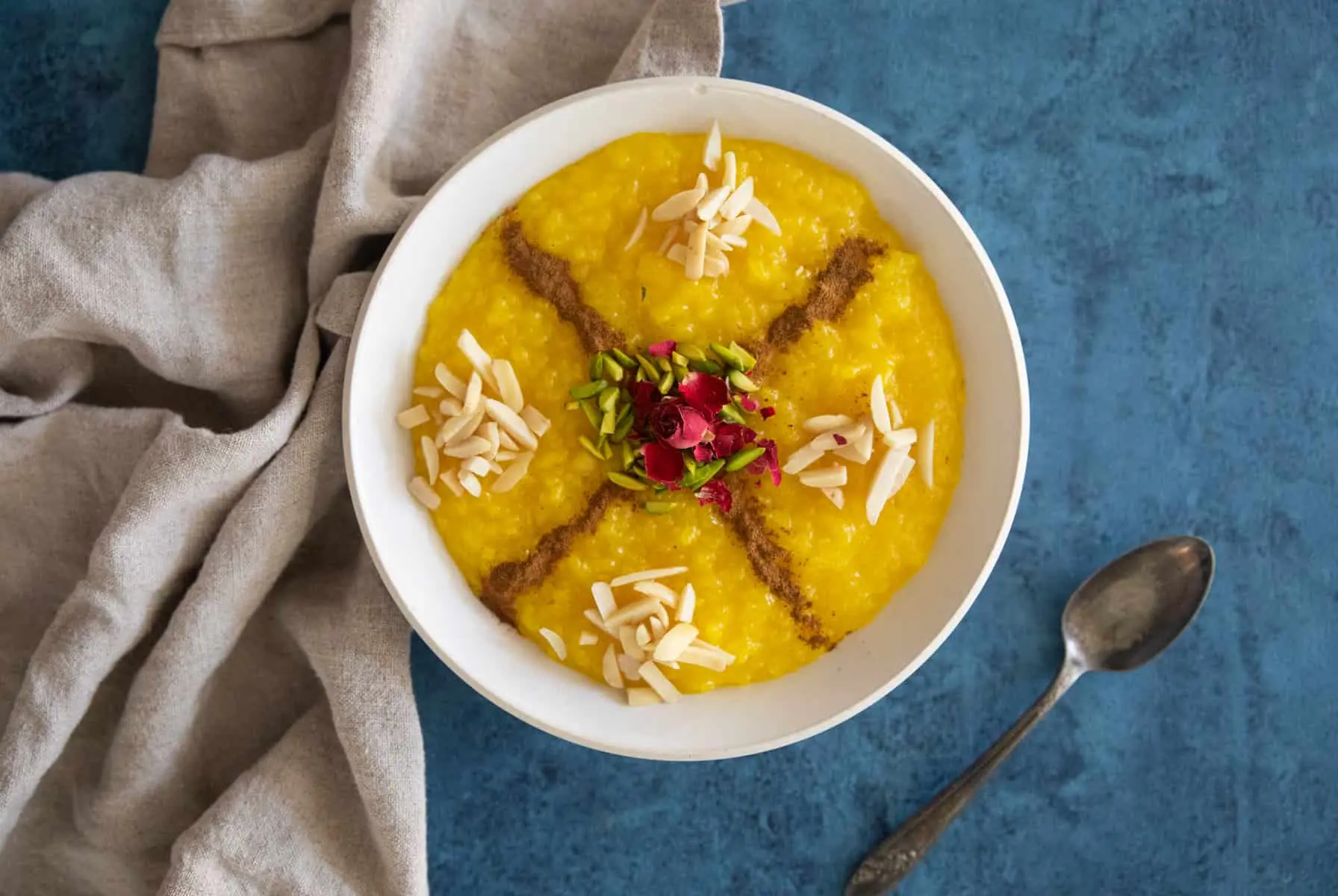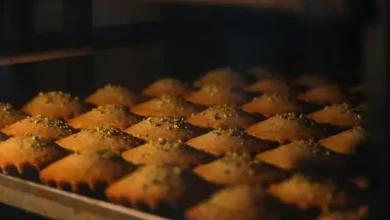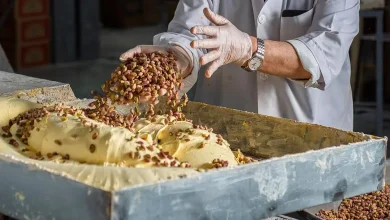Sholezard is a rich, creamy, and aromatic Iranian dessert. It’s interesting to know this dessert has an accidental recipe! this delicious dessert has its roots in the ancient history of Kerman ( a city in Iran ) and is remembered from the era of Ibrahim Khan Zahir al-Doulah.
What is the history of Sholezard?
It is said that one day Ibrahim Khan was cooking rice and saw that the rice was overcooked. So he added some sugar, saffron, and rose water to the rice in order not to waste it.
When the crew of Ibrahim Khan’s house realizes that the amount of dessert is too much, they distribute it among the people. Since, this dessert was spread among the people from Ibrahim Khan’s house, it was named Ibrahim Khani, which today it is famous as Sholezard.
Sholezard is famous for two things: its beautiful and interesting design and the Iranian custom of distributing it among people.
How to make Sholezard?
Ingredients:
. 1 cup rice
. 4 cups water
. 2 cups sugar ( adjust to taste )
. Salt very little
. Butter
. 1/2 teaspoon ground saffron ( brew the saffron )
. 1/2 teaspoon ground cardamom
. Cinnamon stick
. Slivered almonds or pistachios for garnish – optional
To cook the Sholezard, wash the rice and pour the rice and water into a pot. Add a very small amount of salt and let it to cooking.
After a while, when the rice is almost cooked ( it is half cooked) it’s time to add sugar. Add sugar and taste your dessert, again let it cook. We add sugar now because we want our dessert to boil with sugar and taste sweet and wonderful.
When the rice is fully cooked reduce the flame. At this level, our rice is cooked, but we need to cook it a little with the spices. So saffron, cardamom, and other spices add flavor to Sholezard.
First, pour cardamom and cook for five minutes after that, add cinnamon, butter, brew saffron, and rose water cooking for 3-5 minutes.
Turn off the flame, cover the pot, and allow about 30 to 40 minutes for the Sholezard to set and be ready to eat.
Sholezard has symbolic importance, often associated with celebrations and special occasions like religious festivals, weddings, and memorials. Its golden color, derived from saffron, signifies prosperity, joy, and happiness in Iranian culture.





